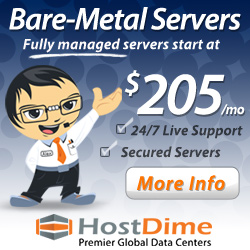With the current rise of pay per click (PPC) advertising services such as Overture, Google AdWords and many others, professional search engine optimization (SEO) companies are having to deal more and more with the issue of why their clients should spend money on traditional SEO when they can simply “buy their way to the top.”
Traditional Search Engine Optimization
First I will define what traditional SEO is. Search engine optimization is the process of fine tuning (otherwise referred to as optimizing) your web site to reflect specific keywords and phrases that are relevant to your business and for which you want to attract visitors to your site who are searching for such words.
This optimization relates to a variety of elements, not only on your web site’s home page, but its sub pages as well. Those elements can include things like title tags, meta tags, alt attributes, title attributes, link structure, link popularity, html structure and the content of the site itself.
Once your web site is properly optimized, the goal then is to make sure that each of the top crawler based search engines find your site and add as many pages as possible in their indices. These engines will usually start with your home page and then work their way to other pages of the site.
This is where another important aspect of SEO comes into play – making sure the sub pages or at least the main areas of your site are accessible from the home page. It can be assumed that if many of your pages are optimized for different keywords and can be found in the search engines, they will draw traffic to your site.
Search engine optimization also involves making sure your site is listed in the major directories such as Yahoo and Open Directory to name a few. I won’t go into detail about proper directory submissions here as that is another topic of its own but will say that it is important to make sure you are listed in the right category and have a title and description that is reflective of the keywords you are trying to target.
Other elements of SEO include monitoring your positioning in the search engines, making adjustments as necessary to your site to stay in top position and submitting to new engines or directories that come along as well.
Pay Per Click
Now I will define what PPC is using Overture as an example. PPC or pay per click is a service in which an advertiser selects specific keywords or phrases and then creates a listing that will show up when someone searches for that phrase. The advertiser selects an amount they are willing to pay for each click on their listing which results in a visit to their site – thus the term “pay per click”. At Overture, you can bid anywhere from $.10 up to $50.00 for each click.
If other advertisers have selected the same keyword or phrase as yours, you then are competing against them for the highest position. Whoever is willing to spend the most shows up first and the others following in order.
What makes PPC attractive in the case of Overture is that they distribute their paid listings to other partner sites. In fact, if you bid in one of the top three positions at Overture, your listings will also show up at some of the leading search engines including All The Web, Alta Vista, iWon, MSN, Yahoo and others. They also show up in several meta crawlers and other minor search engines.
Therefore if you bid for top placement at Overture, you will show up at these partner sites as well. There are many other pay per click programs including Google AdWords, FindWhat, Kanoodle, Sprinks and Looksmart to name a few. All function in a similar manner.
What PPC has allowed one to do then is to instantly “pay” their way to the top whereas traditional SEO takes a lot of time and effort.
The overriding question then is how valuable is PPC and should it replace standard search engine optimization techniques?
Pros and Cons of Pay Per Click
First of all you must understand that PPC will never help improve your positioning in the regular editorial search results. They most always appear in a “Sponsored or Featured” area which is usually at the top or side of the regular search results.
While it is nice to “show up first” there are still a lot of end users, myself included, that do not click on the “paid” listings but rather will search through the regular editorial search results.
Pay per click will not optimize your site so that it reflects who you are and what you offer. If your site is poorly optimized before you begin to advertise it with PPC, it will still be poorly optimized afterwards. Another downfall is that when you stop paying for PPC, it disappears and so does the traffic it brings!
On the other hand, a well executed SEO plan will improve your position in the regular editorial search results. You will have a finely tuned web site that reflects who you are and what you offer. You are not held hostage to having to continuously throw money at search engines to maintain your listings.
In most cases, once you have good positioning in the regular search results, you will continually receive free traffic. It may require some minor adjustments from time to time but all in all brings in consistent free traffic so long as people are searching for your products or services.
I am not saying that PPC is bad and you shouldn’t do it for if you have the budget that will go beyond a traditional SEO campaign, then by all means, utilize PPC as well. You gain instant exposure and only pay for actual visitors to your site.
But never ever disregard SEO in place of PPC! SEO should be the foundation of your online marketing strategy because in the long run, the benefits of SEO will far outweigh anything else you do.











